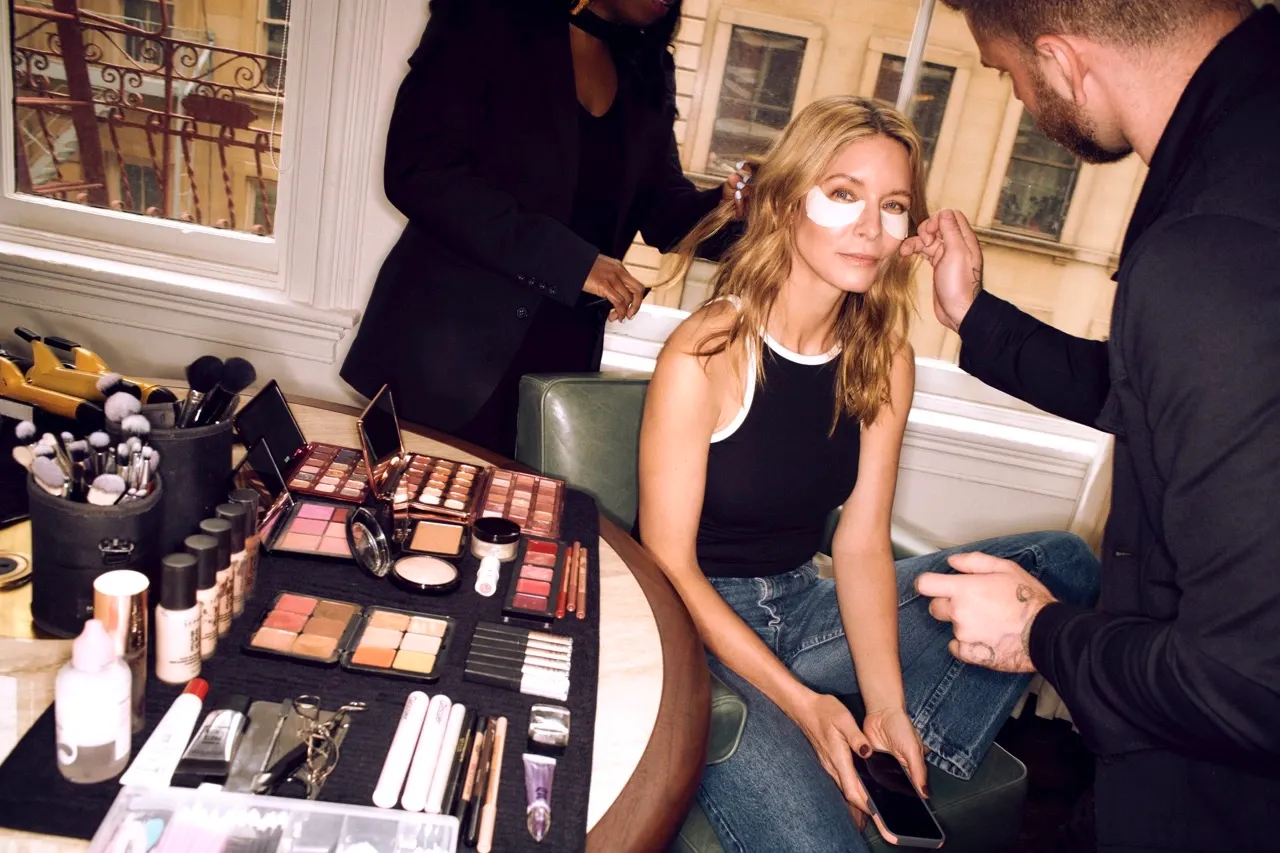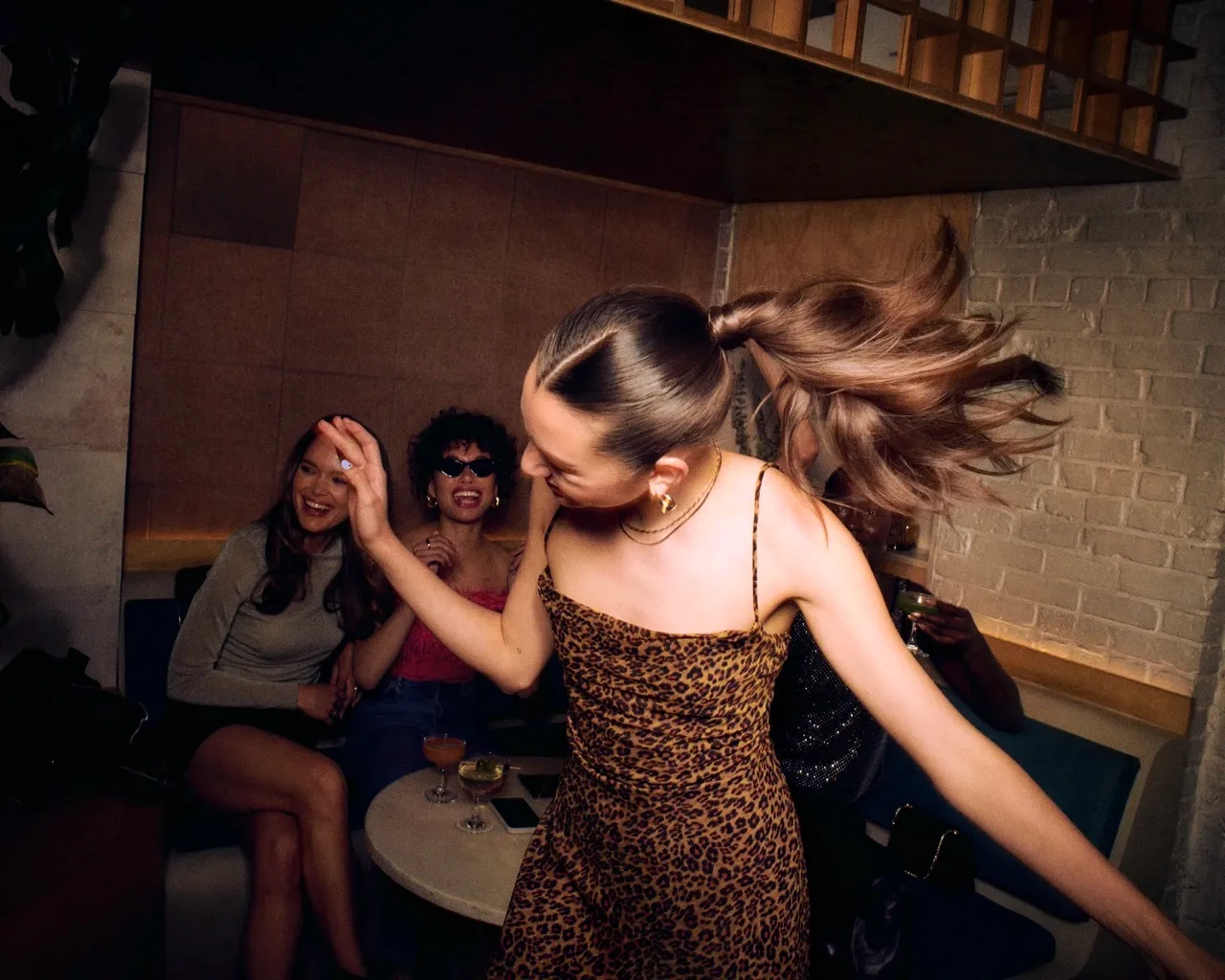Getting that sleek, straight style can feel like a real hair makeover, but it’s important to remember that when it comes to flat ironing, one size does not fit all. The best flat iron temperature for hair depends heavily on your hair’s unique texture and condition. Set the heat too low and your style won’t hold; crank it too high and you risk frying your strands. In this guide, we’ll explain how to choose the optimal flat iron temperature based on whether your hair is fine, coarse, curly, natural, or somewhere in between.
Why Hair Texture Matters for Heat Styling
Hair texture plays a huge role in how much heat is needed for styling. Fine hair has a smaller diameter and is often more fragile, so it generally requires less heat to straighten. Coarse hair, on the other hand, has thicker strands with more protein structure, making it more tolerant of higher temperatures and more resistant to styling. An ultra-fine strand might get perfectly straight at just 250 °F, whereas a thick, unruly strand could need closer to 450 °F to achieve the same result. You should use the lowest effective temperature for your hair, just enough to get the job done, and no more. This prevents you from having to pass over the same section repeatedly, which can cause cumulative heat damage.
Curl pattern matters too. Curly or coily hair often requires a bit more heat to press out the kinks compared to straight or wavy hair. However, curly hair (especially natural 4a–4c hair) can be delicate in its own way, so finding the right balance is crucial. If your hair is fine and curly, you’ll still need to be cautious and use moderate heat despite the curl, because fine strands can scorch easily. Meanwhile, someone with coarse, thick waves or curls might successfully use a higher setting that would be too damaging for finer hair. Always consider both the diameter of your strands and the curl tightness when choosing your heat setting. If your hair is chemically treated or damaged, it will be more vulnerable. Even if you have coarse hair, you should adjust the temperature to avoid exacerbating any weakness in the strands.

Optimal Flat Iron Temperatures by Hair Type
So what temperature should you actually use? Below are general guidelines for various hair types and textures. For other specific hair types, consider the following recommendations:
- Flat iron for fine hair: Delicate fine or thin hair is best served at a lower heat. In many cases, 250°F to 300°F is sufficient to get fine hair straight. Fine strands don’t need as much heat to reshape, and staying in this lower range helps prevent excessive drying or burning of your fragile hair. Always start at the low end of the range and increase only if needed. Your fine hair may straighten at around 275°F with one slow pass, saving it from damage.
- Thick or Coarse Hair: To straighten coarse hair effectively, you’ll likely need higher heat in the 375°F to 410°F range. Coarse or very thick hair is more heat-resistant, so a hotter iron is often necessary to penetrate the strand and create a lasting style. Start near the lower 370s and work up if required; you shouldn’t jump straight to 450°F unless absolutely needed. Many quality flat irons for coarse hair can deliver fantastic results around 400°F without maxing out the dial. Just be sure to use a heat protectant and monitor how your hair responds. If you find one pass at 380°F gets your hair straight, there’s no need to go hotter.
- Flat iron for curly hair: For curly hair, you’ll generally want a moderately high temperature: roughly 325°F up to 375°F. Tighter or thicker curls on the higher end of that spectrum might creep closer to 400°F. The idea is to use enough heat to smooth the curl pattern in one or two passes. If your curls are finer in diameter, stay on the lower end (~330°F); if they are dense and coarse, the upper 300s may be warranted. The goal is to straighten those curls without needing multiple passes, which a sufficiently high heat can achieve. Always err on the side of caution and see if a slightly lower temp will do the trick before going higher.
- Flat iron for natural hair: Natural hair (typically referring to tightly coiled 4A–4C hair that hasn’t been chemically straightened) often falls into the coarse category, but it deserves its own consideration. Most start around 350°F and max out around 400°F for natural hair. You might assume that super kinky hair needs the flat iron pegged at 450°F, but that isn’t always true. Gradually increasing the temperature to 370°F, 380°F, and so on, can reveal an effective setting that straightens your natural hair without overcooking it. If your natural hair is healthy and thick, you may find ~400°F gets you that silky look. If it’s on the finer side or previously color-treated, stick closer to 350°F. Never skip heat protectant on natural hair, and consider using a high-quality natural hair straightener that distributes heat evenly. It will help you get a smooth result at a more moderate temperature.
If your hair is damaged or color-treated, use the lower end of any range given above. And if you feel your hair type lies between categories, start with the lower category’s temperature. It’s always easier to bump the heat up slightly than to regret going too hot from the outset.
Achieving a Long-Lasting Silk Press
For those with natural or curly hair, a silk press is the gold standard for a glassy-smooth, swinging straight style. A silk press is essentially an advanced technique for pressing out tightly curled, natural hair to achieve a silky finish. It usually involves a thorough blowout, a flat iron pass in tiny sections, and often a higher heat setting than day-to-day straightening. The payoff? Incredibly sleek results that can last a couple of weeks with proper care. To get a long-lasting silk press, professionals typically use more heat than a standard at-home straightening session, combined with precision and the right products. This higher heat, combined with techniques like carefully working each section with a fine-tooth comb, helps achieve an ultra-smooth look that lasts longer, often up to 10–14 days, whereas a simple flat iron job might revert in just a few days.
While a silk press does use high heat, it’s not about “frying” the hair. It’s about using just enough heat, in a single pass, to create a lasting impression on those tight curls. The key is preparation and protection.
When flat-ironing for a silk press, work in very small sections so that each strand gets even heat. Many stylists use the “comb chase” method to ensure every bit of hair is smooth and separated as it passes through the plates. Typically, only one slow pass with the iron is done per section. It might be tempting to go over a piece again, but avoid multiple passes, especially at high heat; instead, increase the temperature by a few degrees on the first pass if needed, rather than doing two passes at a lower heat. For natural hair that’s very coarse, a titanium-plated flat iron is often the tool of choice, as it heats up quickly and maintains a consistent high temperature that can help get a better silk press.

To make your silk press truly long-lasting, avoid moisture and reversion after styling. That means no water or steam. Sleeping with a silk or satin scarf wrapped snugly around your hair will keep it smooth overnight and prevent friction. In the morning, a light touch-up at a low heat is preferable to another full-on ironing. With these measures, a well-executed silk press can keep your natural hair looking straight and glossy for up to two weeks. Just remember to use high heat sparingly; silk presses are best saved for occasional looks, not weekly routines, to avoid heat damage when straightening natural hair.
Tips to Avoid Heat Damage When Straightening
Everyone loves the look of perfectly straightened hair, but no one loves the dry, brittle aftermath of heat damage. So how can you style safely and keep your hair healthy? Here are some essential tips to protect your tresses when flat ironing:
- Always use a heat protectant: This is non-negotiable. Before you put any hot tool on your hair, apply a quality heat protectant product to coat your strands. Heat protectants create a barrier that slows down moisture loss from inside the hair and helps prevent the cuticle from scorching. For best results, apply it to damp hair and comb it through, then let your hair fully dry before flat-ironing.
- Make sure your hair is completely dry: Never use a flat iron on wet or even slightly damp hair. Any water trapped in the hair will rapidly heat up and turn to steam when pressed by an iron at 300°F–400°F, essentially boiling your hair from the inside out. This can create tiny bubbles within the hair shaft, causing strands to become weak or break off. Only straighten hair that has been thoroughly blow-dried or air-dried; if you hear a sizzle, stop immediately and reassess your drying process.
- Dial in a safe temperature: Use the lowest temperature that gets you results, and don’t just max out your flat iron because it goes to 450°F. Once you push past around 392°F (200°C), you’re entering the danger zone where significant damage occurs quickly. Hair can literally start to melt at roughly 220°C (428°F). Going that high is rarely necessary outside of professional chemical treatments. Staying in the recommended ranges for your hair type will greatly reduce the risk of heat damage.
- Limit passes and frequency: Every time you run the flat iron over your hair, you’re causing a bit of microscopic damage by drying out the cuticle oils and weakening the protein bonds. It’s better to straighten a section once slowly with the correct heat than to do 4–5 quick passes at a lower heat. Similarly, try not to flat-iron the same hair every single day. Give your hair “heat-free” days to recover its moisture, and save the flat iron for when you really want that super-sleek look. On days you do heat-style, consider skipping other damaging services to minimize cumulative stress on the hair.
- Maintain your hair’s health with proper care: Healthy hair can tolerate heat styling much better than hair that’s already parched or damaged. So, in between straightening sessions, focus on hydration and strength. And don’t forget regular trims. A quick haircut for women who frequently use hot tools is key to snipping off any split ends before they worsen. Even if you’re growing your hair out, trimming ¼ inch off every couple of months will prevent split ends from traveling up the shaft. Strong, well-nourished hair will not only resist heat damage better, but it will also look smoother and shinier when you flat iron it.
By following these precautions, you can significantly avoid heat damage when straightening your hair. The overarching principle is to treat your hair gently, even when using an aggressive tool like a flat iron.
DIY vs. Professional: When to Get Help from the Pros
With the right knowledge and tools, many people can successfully flat-iron their hair at home. However, there are times when calling in hairstyling professionals can make a big difference. Professional stylists are trained to assess your hair’s needs and employ the most suitable techniques for your specific hair type. For instance, a professional can determine whether your curls will straighten better with a ceramic iron at 380°F versus a titanium iron at 350°F, and they’ll adjust on the fly to avoid scorching your hair. They also tend to have high-quality irons with precise temperature controls, meaning your hair is less likely to be exposed to uneven or excessive heat. If you have a very important event or are attempting a new style, you might consider booking a professional hair service to ensure it’s done safely and expertly.

These days, getting expert help is easier than ever. You don’t even necessarily need to go into a salon. There are on-demand beauty services that will come to you, providing a hair service at home for maximum convenience. Glamsquad, for example, allows you to get a hair appointment online and have a vetted stylist show up at your door. The stylist can perform a blowout, flat iron, or even an updo right in your living room, bringing all the pro tools and products needed. This can be a game-changer if you’re nervous about flat-ironing your own hair or simply want to pamper yourself with salon-quality service at home. To make it even more enticing, keep an eye out for hair service deals or promotions. Many services offer discounts for first-time clients, bundle packages, or seasonal promotions, making occasional professional styling more budget-friendly.
The bottom line is that the best flat iron temperature for hair is a highly individual matter. It depends on your hair’s texture, thickness, and condition. Finding that sweet spot will involve a bit of awareness and experimentation on your part. Always start with a lower heat and only increase if you find it’s truly necessary. Your hair will tell you when the heat is just right: it will become sleek with one or two passes, without looking dry or fried. By tailoring your flat iron’s temperature to your hair type, you can enjoy beautifully straightened styles that have tons of shine and minimal damage. Remember, hair health and style go hand in hand.
Sources
- Mane Addicts – “The Optimal Flat Iron Temperature for Your Hair Type” heymane.com
- Hair.com by L’Oréal – “How Hot Is Too Hot? The Optimal Temperature for Hot Tools” hair.com

